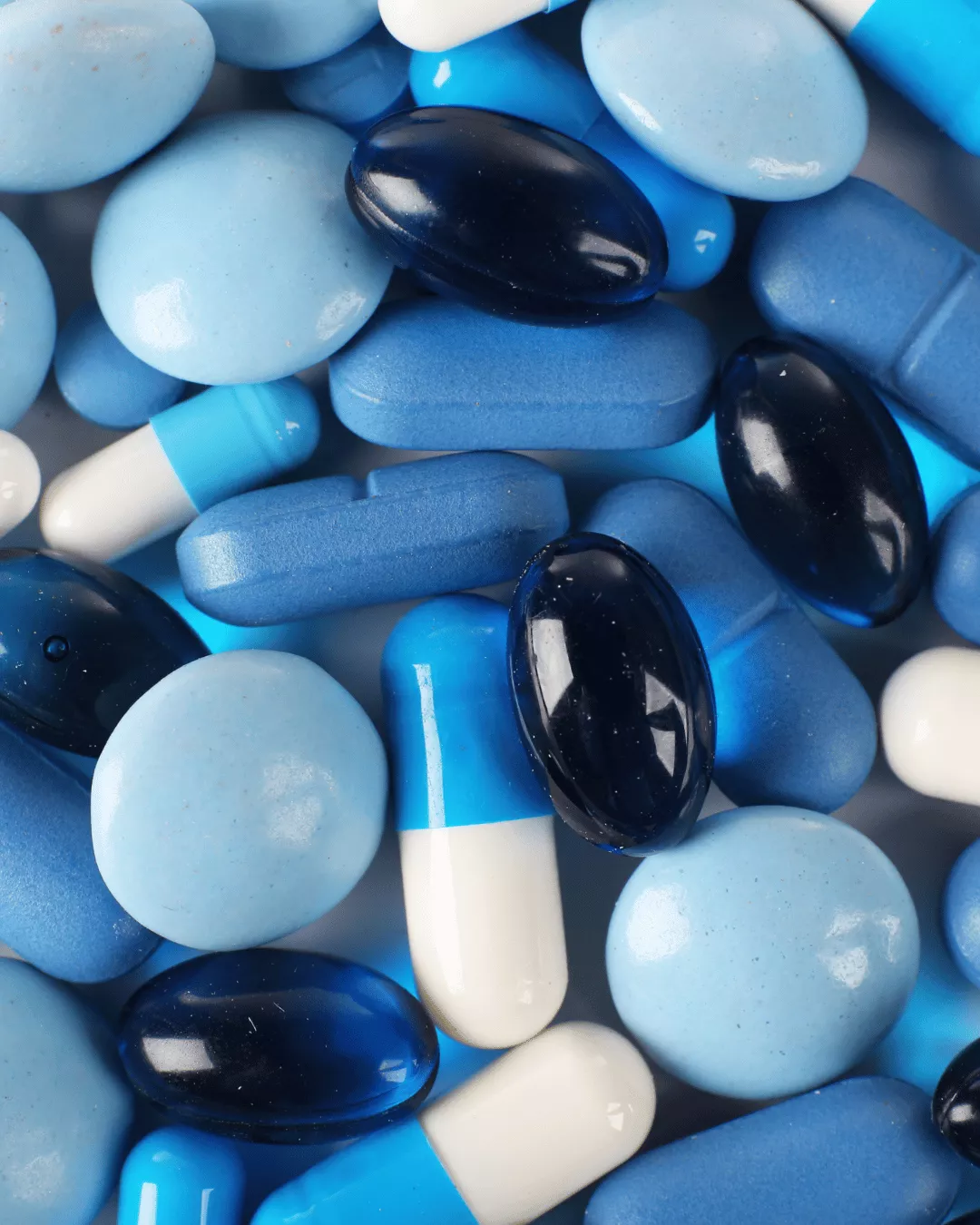Understanding Tablet Coating Process
Coating Methods in Making Tablets
There are two principal methods of coating tablet: sugar coating and film coating. Both have advantages and disadvantages, and the following table provides a comparison between the two methods. The choice of which method is appropriate depends to an extent on how the tablets have been produced, the composition of the tablet and the intended market. Each method is described in detail below. In addition, there are other, more specialized means of tablet coating that may be useful for tablets with difficult or unusual requirements. These are described at the end of the article.
Sign Up to Our Newsletter
What Are the Differences Between Film Coating and Sugar Coating?
| Tablet Features | Film Coating | Sugar Coating |
|---|---|---|
|
Appearance: |
Retain contour of original core. Usually not as shiny as sugar coat type |
Rounded with high degree of polish |
|
Weight increase because of coating material |
2-3% |
30-50% |
|
Logo or 'break lines' |
Possible |
Not Possible |
| Process | Film Coating | Sugar Coating |
|---|---|---|
|
Operator training required |
Process lends itself to automation and easy training of operator |
Considerable
|
|
Adaptability to GMP |
High |
Difficulty may arise |
|
Process stages |
Usually single stage |
Multistage process |
|
Functional coatings |
Easily adaptable for controlled release |
Not usually possible apart from enteric coating |
Sugar Coating in Tablets
Tablets that are compressed are often coated with layer of sugar that may be coloured or uncoloured depending on the purpose of the tablet. The sugar coating is generally water-soluble making it easier to dissolve quickly when it comes into contact with any liquid medium such as gastrointestinal fluids. One purpose of the sugar coating is to protect the drug inside the tablet and act as barrier to external contaminants. It may also hide or mask the unsavoury taste of the drug that some patients may find unpalatable. Tablet coating is used to improve the tablet’s appearance and has the added benefit of providing pharmaceutical companies a surface on which to imprint information or branding. Sugar coating insulates and masks the colour and texture of the tablet’s core. It may also influence the release of the encased drug in the body.
Despite the many benefits of sugar coating, one disadvantage is that it requires additional time and specialization or expertise, all of which contribute to increasing the cost of the end product.
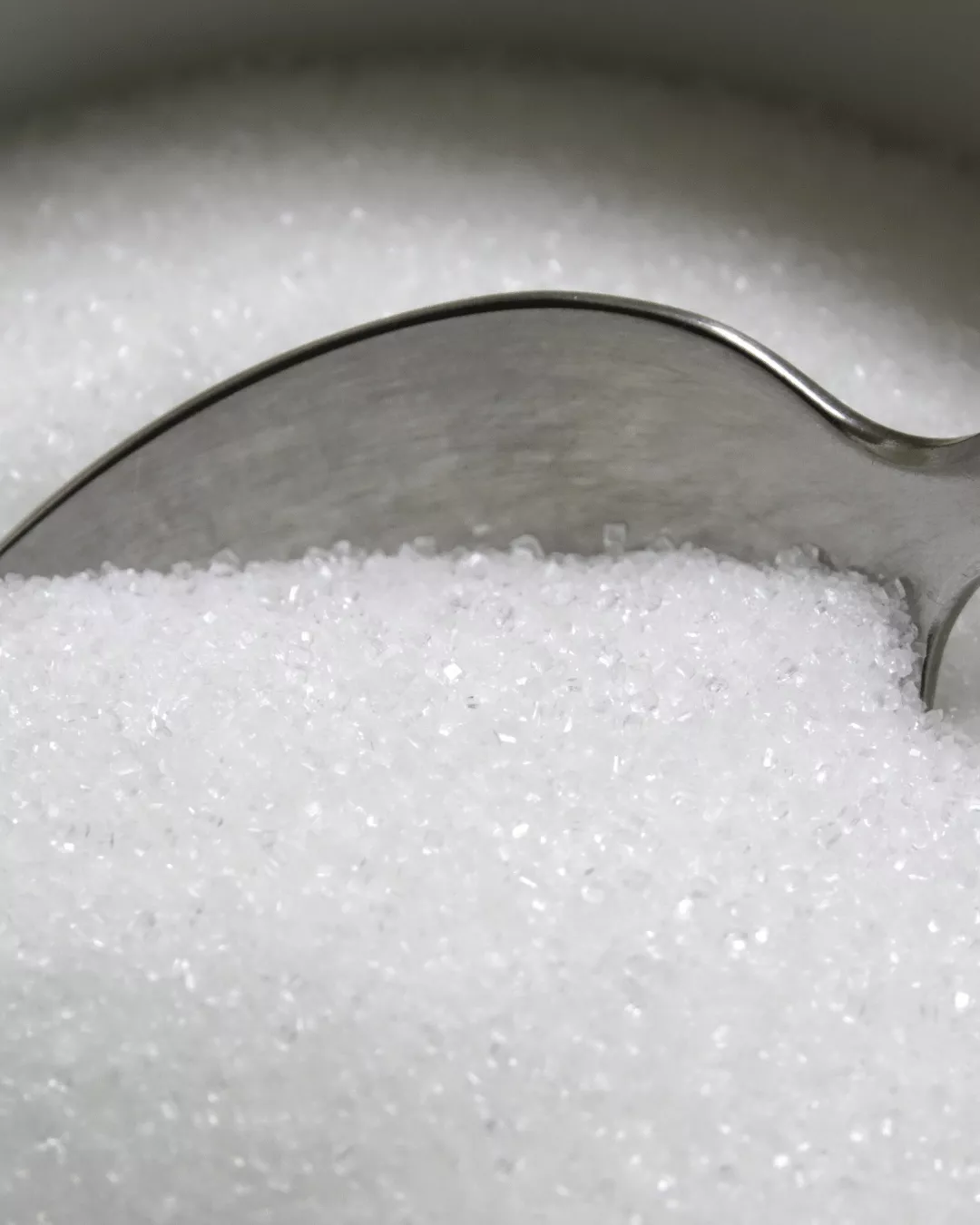
Four processes are commonly employed in sugar coating, in the following order:
- Sealing (Water Proofing) – sealing involves hardening the external surface of the tablet by providing a moisture barrier.
- Grossing (Smoothing) – this is often carried out in stages. The first step is to build up the shape and size of the tablet, and the second involves smoothing out the coated area while increasing the size of the tablet to the required dimensions.
- Colouring – provides the tablet the appropriate colour for the end product.
- Polishing – finishes the tablet by polishing to give the tablet a glossy and professional appearance.
The processes are summarised below.
Sealing (Water Proofing)
Before any sugar or syrup is added to the tablet, the core must be sealed and thoroughly dried so that it is free from any moisture or residual solvents. Once the core is dry, a sealing coat is applied to protect the core from absorbing any moisture. The sealing layer or coating hardens the surface to provide protection for the core in subsequent process steps. The core of the tablet is usually weak and has high propensity for disintegration. The core would therefore likely be the first to disintegrate during the coating process. Common water-proofing sealants are usually water-soluble and are formulated from organic solutions.
The choice of sealant formulation is influenced by the porosity of the tablet since highly porous materials would soak up the sealant solution, preventing the creation of a uniform coating over the whole tablet. A second coating of course can be applied once the first is dried, to ensure that the core is effectively sealed.
Sealants that are commonly used include:
- Shellac
- Zinc oxide
- Cellulose acetate phthalate
- Polyvinylacetate phthalate
- Hyroxylpropylcellulose
- Hyroxypropylmethylcellulose
Subcoating
The sugar coating process actually starts with a subcoating stage in which the sides of the tablet are rounded or shaped up to the desired appearance. This stage is where the tablet is smoothed and colour may be added.
There are two ways of subcoating:
- A gum based solution or syrup is coated on the tablet, followed by the application of a suitable powder filler. The tablet is then dried. The procedure is repeated until the desired tablet shape is achieved.
- Dry powder is applied followed by gum/sucrose solution. Once applied, the gum/ solution excess water is removed by dring so as to harden the surface again.
Subcoating therefore involves alternating gum solution with dusting powder until the desired shape and consistency is achieved. Excess water is removed after every syrup application.
Typical Binder Solution Formulation For Subcoating
|
%W/W |
%W/W |
|
|---|---|---|
|
Gelatin |
8 |
3.3 |
| Gum acacia (powdered) |
8 |
8.7 |
|
Sucrose (powdered) |
45 |
55.3 |
|
Distilled water |
to 100 |
to 100 |
Typical Dusting Powder Formulation For Subcoating
|
%W/W |
%W/W |
|
|---|---|---|
|
Calcium carbonate |
40.0 |
- |
|
Titanium dioxide |
5.0 |
1.0 |
|
Talc, asbestos free |
25.0 |
61.0 |
|
Sucrose (powdered) |
28.0 |
38.6 |
|
Gum acacia (powdered) |
2.0 |
- |
Typical Suspension Subcoating Formulation
|
%W/W |
|
|---|---|
|
Sucrose |
4.0 |
|
Calcium carbonate |
20.0 |
|
Talc, asbestos free |
12.0 |
|
Gum acacia(powdered) |
2.0 |
|
Titanium dioxide |
1.0 |
|
Distilled water |
25.0 |
Grossing (Smoothing)
The Grossing or smoothing step involves filling out and smoothing irregular features or areas of the tablet. After each filling step, the tablet is smoothed by polishing, refinishing the tablet so that a smooth and finished look is achieved. The process gradually also increases the size of the tablet to the required dimensions.
If there are a large number of irregularities in the tablet, the worker may use a grossing syrup which contains suspended solid particles which can better fill the voids in the tablet than a sugar solution. An application of approximately 60-70% of sugar solids is generally enough to smooth the tablet. The solution usually contains a mixture of starch, pigments, acacia, gelatine, and opacifier if needed.
In certain instances, colour may be added in during the grossing stage give the appearance of a homogenous coating layer.
Colour Coating
Colour coating is the most crucial penultimate stage in the coating process as multiple sugar solution is added to ensure that the predetermined colour is achieved. Historically soluble dyes have been used to give the desired colour as these stick to the surface of the tablet during the drying process. Nowadays, however, pharmaceutical companies prefer the use of insoluble certified aluminium lake pigments. These are materials that tint the tablet by dispersion. Lakes are produced from dyes but are oil dispersible (but generally not oil soluble) and thus can be mixed with oils and fats. They can also be dispersed or suspended in other carriers such as propylene glycol, glycerin and sucrose (water and sugar).
Polishing
The final step in the sugar coating process is a polishing step. This is carried out to impart a shiny distinctive appearance to the tablet. An application of wax such as carnuba wax, candelila wax, beeswax and hard paraffin is used to polish the tablets inside a polishing pan.
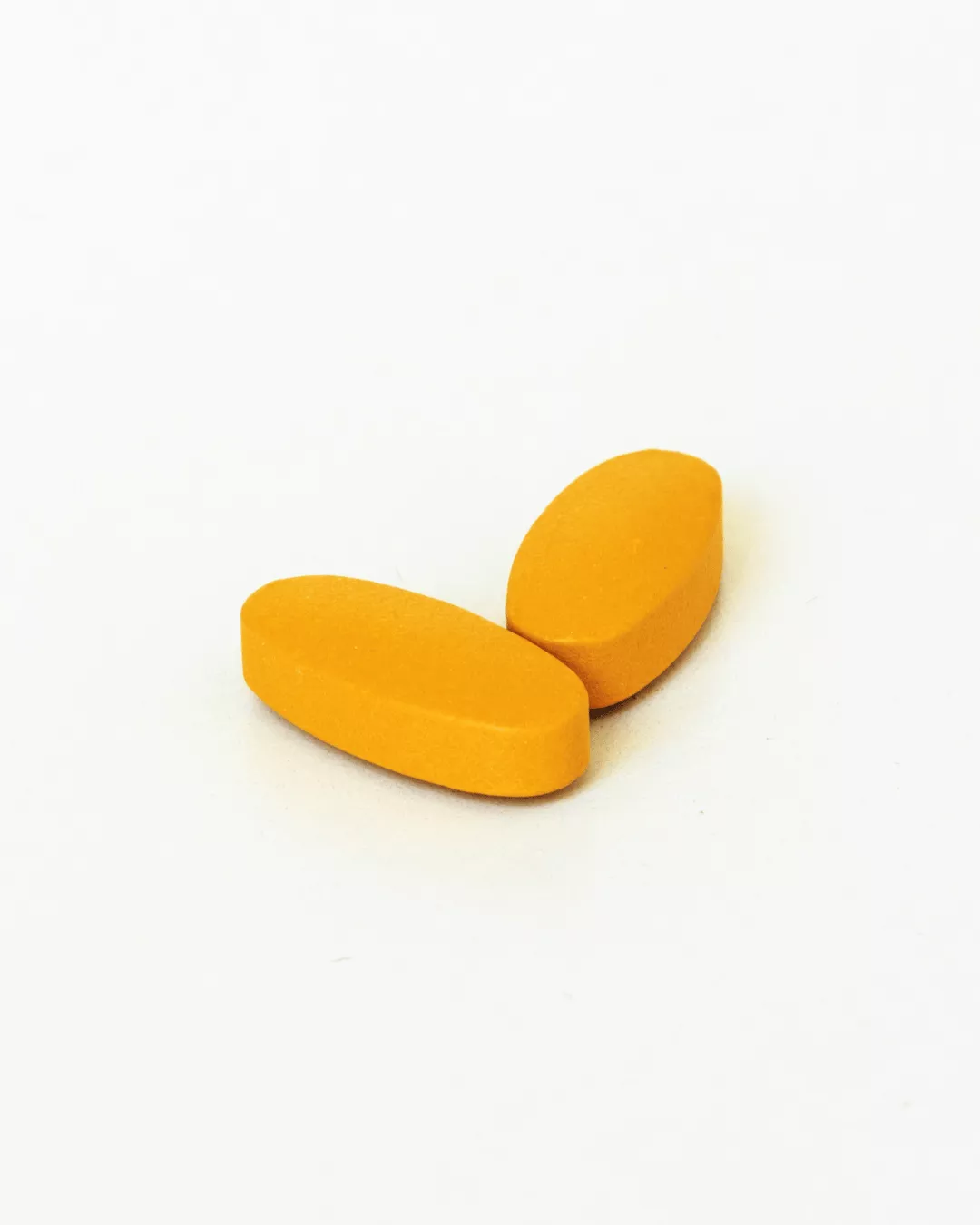
Film Coating
Film coating starts, as for sugar coating, by enveloping the tablet’s core with a thin film of protective polymer. Traditional pans can be used for film coating, but recent innovations make use of more sophisticated equipment that provides a level of automation. These include rotating perforated drum machines and fluidized bed machines. The polymer that is to serve as the coating film is dissolved in a suitable solvent, together with additives such as pigments and plasticizers. Once these materials are mixed and homogenised the solution is then sprayed on the tablets. Finally the tablets are dried, which remove the excess solvent leaving behind a thin coating of the solvent around the core of the tablet.
Film Coating Requirements
The basic requirements for film coating need to be considered independently of the actual equipment being used. These include the most appropriate means of atomizing the spray liquid during application, proper mixing and agitation of the tablet bed, and providing enough drying heat air to evaporate the solvent (especially for liquid-based sprays). Exhaust efficiency is also important to remove the solvent laden air and dust as well.
Developing the Coating Formulation
The following questions should first be answered in order to determine if film coating is applicable:
- Is it important to mask the taste, odour or colour of the tablet?
- Is it important to control the release of the drug?
- What are the specifications that need to be fulfilled during the developmental stage? (size, colour, shape)
The size, colour and even the shape of the tablet is important especially when it comes to marketing the final product and can have an impact on the marketing strategies of the company. An experienced formulator may consider the coating formulations that have been proven successful in the past. In formulating a new film it is useful as a first step to be able to cast a trial film by spreading the coating solution onto a flat surface of Teflon, aluminum foil or glass using a spreading bar to achieve the preferred thickness. Trial films can also be made using a spray machine in which a trial surface is mounted in the coating pan/drum.
Formula Optimization
The base formula for every coating is usually achieved taking a previous formula and modifying it to improve the bond of the coating with the core of the tablet, increasing the hardness of the coating etc. At this stage the required concentration of colouring material and/or opaquant are determined to ensure the desired colouring and shade of the product. Common formula modifications also include the polymer to plasticizer ratio, and/or the addition of alternative polymers that impart beneficial properties to the coating.
Materials Used in Film Coating
- Film formers (enteric or non-enteric)
- Solvents/solutions
- Plasticizers
- Colourants
- Opaquant extenders
- Other components
Film Formers
In considering suitable materials for film formers, the following need to be considered:
- Solubility of the film former in the desired solvent
- pH-dependence of solubility
- Capacity for an well-designed end product
- Constancy against outside conditions such as light, heat, moisture and substrate
- Stability in terms of taste, colour and smell
- Compatibility of the film former with other coating additives
- Nontoxic with no pharmacological actions
- Resistance to cracking
- Film formers should not lead to bridging or filling
- Ideally compatible with imprints
Commonly Used Film Formers
Hydroxy Propyl Methyl Cellulose (HPMC)
HPMC is a polymer that is ideal for processes such as air suspension and pan spray coating due to its solubility in organic, gastric fluid and other liquid solvent matter. It is available in different viscosity levels.
- Advantages – HPMC is cheap, heat, light and moisture resistant, flexible; it has no inherent smell or taste, does not affect the tablet’s disintegration and drug availability and colours and other additives can easily be added.
- Disadvantages – When used by itself HPMC is inclined to bridge or fill up the debossed tablet’s surface. For this reason it is recommended that HPMC is used in combination with other polymers.
MHEC - Methyl Hydroxy Ethyl Cellulose
This is not used as often as the HPMC because it is soluble in only few organic solvents. Solutions are available in different viscosity levels.
EC - Ethyl Cellulose (EC)
Ethyl cellulose has to be used in combination with other water soluble additives such as the HPMC as it is completely insoluble in water and gastric juices. The EC viscosity level depends on the level of ethoxy used. Unplasticized EC films are often brittle and require modifiers in order to become pliable and be used in film formulations. The aqua coat, for example, is an aqueous polymer formulation that utilizes EC. The pseudolatex is an EC system with low viscosity, and high solid content that imparts different properties to the regular EC solution.
Hydroxy Propyl Cellulose (HPC)
This material is water-soluble below 40°C but insoluble above 45°C. It is soluble in other fluids such as gastric and other organic solvents. It is flexible but becomes tacky while drying and is used only as as a sub-coat and not for gloss or color coating.
Povidone
Povidone is available in 4 viscosity levels: K-15, K-30, K-60 and K-90 corresponding to average molecular weight of the polymer of 10,000, 40,000, 160,000 and 360,000 respectively. The K-30 is commonly used as a binder and coating formulation for tablets as it has an excellent solubility when it is exposed to liquid components such as water, intestinal fluid, gastric and even organic solvents. Povidone can also be cross-linked with other materials to form films that have enteric properties. It can also be used to disperse colours to coat tablets.
Sodium Carboxy Methyl Cellulose
This agent is only useful when dispersed in water in order to form colloidal solutions so is not the right choice as a coating for tablets that are based on organic solvents. Although the solution adheres to the tablet’s surface, the tablet becomes brittle when exposed to the solution. Partially dried films are considered tacky and as such other additives are used to modify the composition. Viscosity levels range from medium, high and extra high
Polyethylene Glycol (PEG)
The PEG comes in two forms:
- A low molecular weight version (molecular mass between 200 and 600g) that is liquid at room temperature - this are used as plasticizers.
- A high molecular weight form (molecular mass between 900 and 8000g). PEG (900-8000). The higher molecular weight PEG appears as an off-white wax at room temperature.
Formulators tend to mix the two forms to produce a film that is soluble when it comes in contact with gastric fluids.
Acrylate Polymers
Acrylate polymers are marketed under the EudragitO as a cationic polymer. The polymers are freely soluble when exposed to gastric fluids as high as pH 5.0, and become permeable and expandable when above the pH 5.0. These polymers are available as organic solution in isopropanol (12.5 wt.%) and as solid or 30% as aqueous dispersion. The EudragitORL & RS are co-polymers that have low content of quaternary ammonium compounds. The co-polymers are only available as solid materials or as organic solutions. They produce the films that are pH-dependent (delayed in action).
Solvents
Solvents are used to dissolve the polymers and other additives ready for spraying or otherwise coating the surface of the tablet or capsule. The basic solvent requirements are:
- It should be able to dissolve or disperse the polymer
- It should easily dissolve other additives added to the system
- Small concentrations of the polymer should not cause any problems for exceedingly viscous solution
- It should be non-toxic and non-flammable
- It should be odourless, colourless and tasteless
- It should not cause any environmental problems
- Have high drying rate
Most of the solvents used are by themselves, however some are combined with other solvents. Examplese include ethanol, chloroform, water, methanol, isopropanol, acetone and methylene chloride. Due to environmental and health concerns, water is the most commonly used additive; however for drugs that hydrolyze when they come into contact with water, non-aqueous solvents are necessary.
Plasticizers
Once the solvents are removed, the polymers tend to stick together creating a 3D honeycomb look. Plasticizing techniques – internal and external are used to change the film quality and a combination of the plasticizers maybe required to achieve the desired appearance. The required concentration of plasticizer in the film formulation depends on the polymer that is being plasticized where the recommended level ranges from 1-50%, depending on the required mass of the film.
Castor oil, PG, glycerin, and PEG (200-400 low molecular weights) are commonly used plasticizers. Castor oil is primarily used as a base for organic solvent solutions; on the other hand, PEG and PG are commonly used for aqueous coating. External plasticizers must be soluble in the solvent that is used to dissolve the plasticizer and film. The film former and the plasticizer must however achieve at least partial mutual solublity in the solvent.
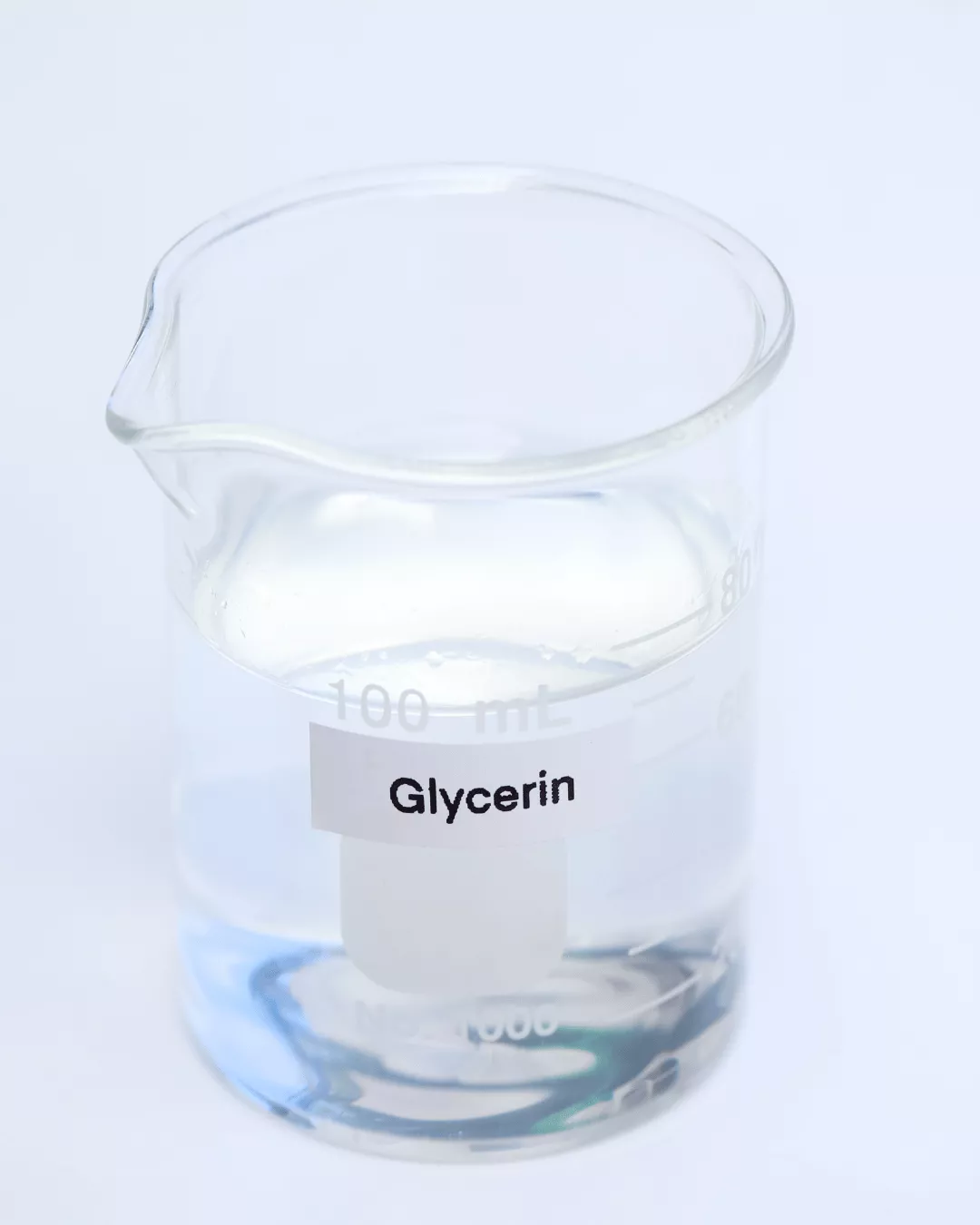
Colourants
Most colourants used in film coating are available in solution or suspension form. To distribute a suspended colourant equally, the coating solution requires the use of powdered colourants. The most commonly used lakes and dyes are the certified FD, C and D/C colourants. For sugar or film coating, lakes are preferred because they produce more reproducible results.
The colour shade, dye type and opaquant extender are some of the features that need to considered in ensuring the correct concentration of colouring in the coating solution. Concentrations of < 0.01% generally result in a lighter shade whereas a concentration of 2.0 % results in a darker color. Other inclusions such as inorganic materials (e.g., red iron oxide) and natural colours such as carotenoids and anthrocyanins may also used to prepare the coating solution. The colour magenta red dye is non-absorbable in the bio-system and resistant to degradation when it approaches the gastro intestinal tract. To achieve less lot-to-lot colour variations, OpasrayO and OpadryO are used to improve drying of the film.
Opaquant-Extenders
These extenders are fine inorganic powder used to increase the fill coverage and provide more pastel colour shade to the tablet. The white coat covers the core of the tablet. The colourants are expensive and a high level is needed; however the inorganic materials are more affordable. In the presence of the inorganic matters, the level of colourants decreases. Common inorganic powders include:
- Titanium dioxide
- Silicates (aluminum silicates including talc)
- Carbonates (e.g., magnesium carbonates)
- Oxides (e.g., magnesium oxide)
- Hydroxides (e.g., aluminum hydroxides)
The pigments have excellent hiding power for intagliations in film-coated tablets.
Other Components
Other solutions that can be added to coating formulations include surfactants, flavours, antimicrobials, antioxidant and sweeteners.
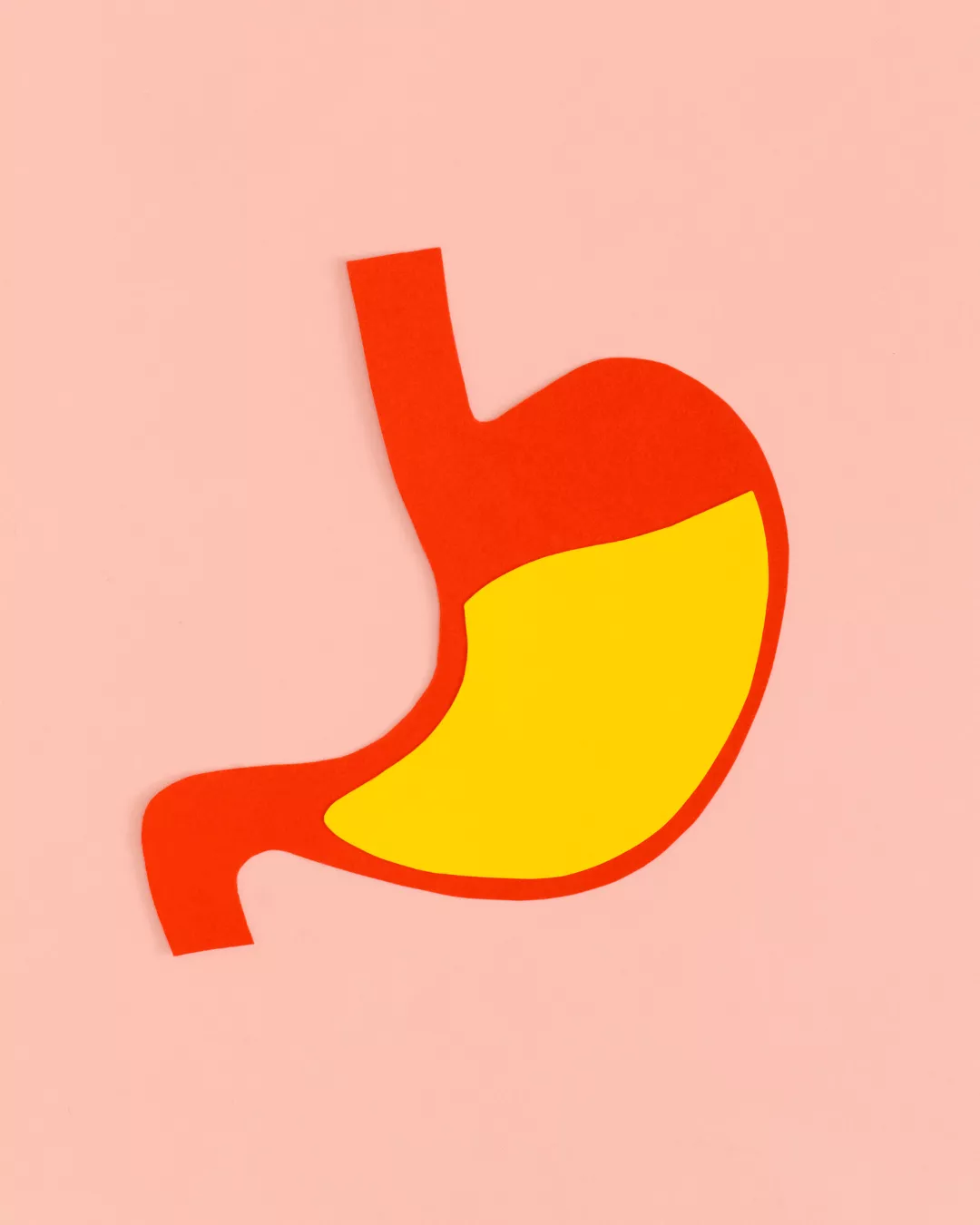
Enteric Coating
Enteric coating is a term used to describe the coating that gives complete protection to the core of the tablet. Enteric coating protects the drug against attack by acids in the stomach. The following should be noted:
- The applied coating should either prevent drug release or the ingress of gastric fluids under specified conditions of pH and also promote rapid release of the drug in the higher pH regions of the jejunum, duodenum etc.
- Good mechanical film properties are required to ensure integrity of the coating.
- Performance should remain unchanged with time.
- Workers and the environment must be protected from the potential hazards of organic solvents.
- There is pressure to increase savings in raw material costs.
In addition, the following may be required:
- Prevention of degradation by sensitivity to acids
- Prevention of stomach irritation cause by inclusion of sodium salicylate
- Delivery of the API into the intestine after leaving the stomach
- Delaying the release of the components in the tablets
Enteric coating generally comprises one or two layers of coating:
- 1-Layer System – the formulation is coated in one contiguous layer either in colour or as a white-opaque layer. This obviously requires only one application of coating which limits the cost of the process.
- 2-Layer System – the enteric formulation is applied first after which the coloured layer is superimposed. Both of the layers can also be of enteric formulations or the basic layer can include the enteric polymer while the top coloured layer can disintegrate and can be water-soluble.
The first layer is a coating of polymer film but the second or top layer in a 2-layer system may be polymer film or a sugar-coating.
Preferred Properties of Enteric Coating in Tablets
- Resistance to attack by gastric fluids
- Susceptible to permeable fluids
- Compatible with different coating solution components
- Able to completely cover the core tablet, i.e., to develop an uninterrupted film
- Non-toxic, affordable and easy to apply
- Easy to imprint
Examples of Enteric Coating Polymers
Cellulose Acetate Phthalate (CAP)
This is a common polymer coating used in the industry. Aquateric, a commercial CAP material, comprises a reconstructed colloidal diffusion of latex particles composed of solid or semisolid polymer spheres of CAP that range from 0.05 – 3 microns. Cellulose acetate trimellitate (CAT) is a similar polymer developed as an ammoniated aqueous formulation and shows a more rapid dissolution than the same formulation of CAP.
Disadvantages of CAP and CAT include:
- Dissolves < pH 6
- Delays drug absorption
- Permeable to moisture compared with other enteric polymer
- Hygroscopic
- Susceptible to hydrolytic removal of phthalic
- Acetic acid changes film properties
CAP films are fragile and usually used in conjunction with other hydrophobic films
Acrylate Polymers
There are 2 forms of commercially available enteric acrylic polymer resins - Eudragit(r)L & Eudragit(r)S which produce films that are resistant to gastric liquids. Both of the resins are soluble in intestinal fluid at pH 6 and 7. The L is available in organic, solid or aqueous distribution. The S is only available as an organic and solid solution.
Hydroxy Propyl Methyl Cellulose Phthalate (HPMCP)
Commonly used forms of this polymer are - HPMCP 50, 55 & 55-s - the 55 is also recommended for enteric preparation whereas the 50 and the 55-s are for special applications. The polymers dissolve at a pH of 5-5.5.
Polyvinyl acetate phthalate (PAP)
This polymer is similar to the hydroxyl propyl methyl cellulose phthalate HP-55 in terms of stability and pH dependent solubility.
Application of Enteric Polymer Coating
All of the enteric polymers listed above are capable of forming a complete direct film for coating tablets. To ensure that a complete and efficient seal of the tablet core is achieved, sufficient weight of the polymer is needed. To achieve controlled delayed release of drug, the coating can be mixed with polysaccharides which do not react in the stomach but can degrade in the colon. Controlled released coatings are generally prepared using polymers such as modified acrylates and water insoluble cellulose.
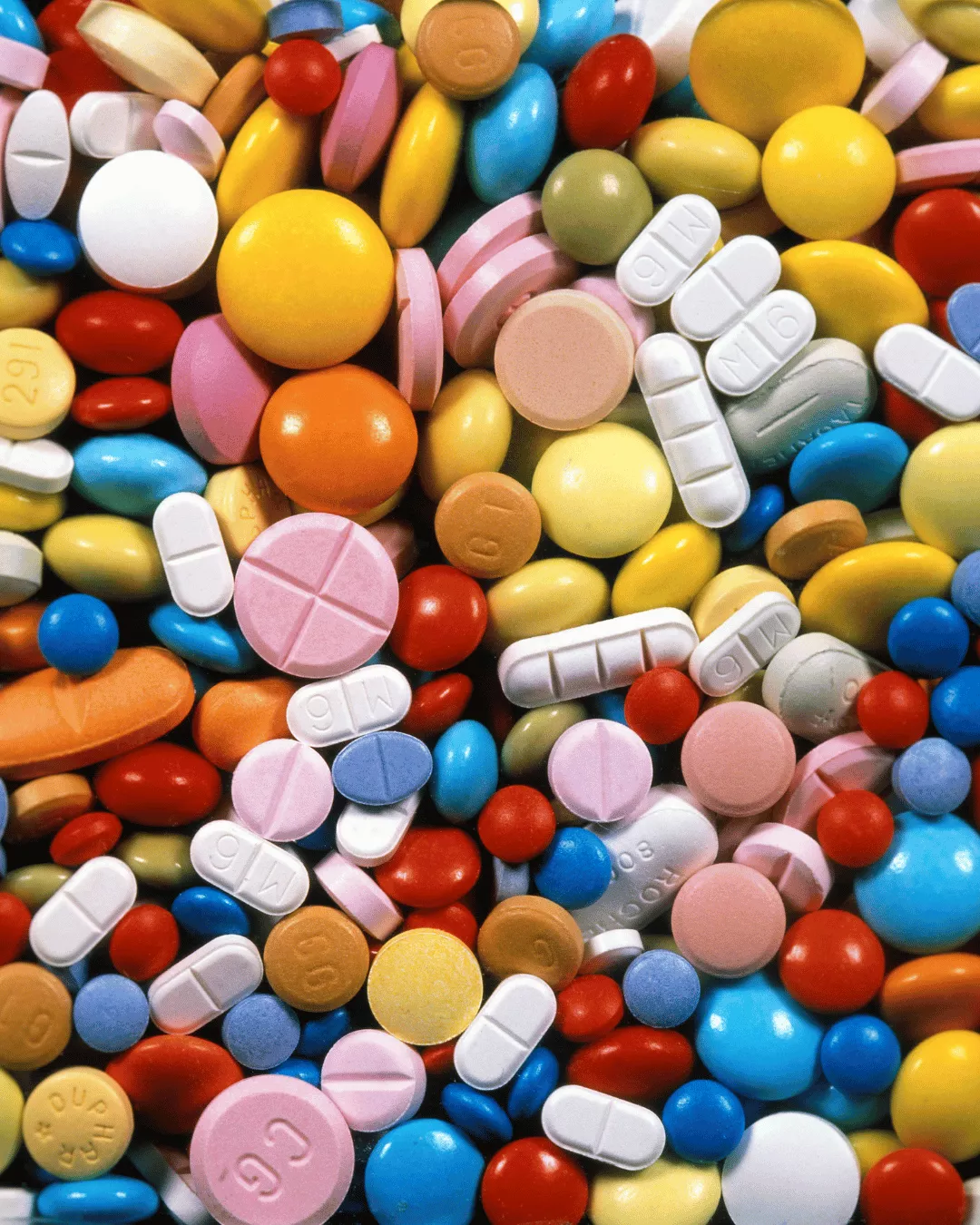
Specialized Coating
In addition to the two commonly used coating methods described above, there are some specialized coating methods that can be applied for specific circumstances, as follows.
Compressed Coating
The coating requires a specialized tablet press machine. This type of coating is not popular but has some advantages including the ability to coat the tablet to mask the taste and protect the core from organic solvent or water. Other advantages include delaying the enteric properties and preventing the separation of the incompatible ingredients.
Electrostatic Coating
This is a method whereby coats are applied to the electrically conductive substrates. A strong electrostatic charge is applied to the substrate. The materials in the coating process contain ionic species that are of opposite charge which are then sprayed onto the charged substrate. The method is limited to substances and spraying solutions that can be electrically charged – adaptability of the electrostatic coating method to nonconductive tablet substrates is limited.
Dip Coating
In this method the tablet’s core is simply dipped into the coating liquid. Once dipped in the solution, the tablets are then placed in a traditional coating pan to dry. The steps are repeated until the desired coating is achieved. Disadvantages for this process include the lack of versatility, low speed as well as low reliability compared with the spraying methods. Although specialized equipment has been developed for dip coating, no commercial application for it has been attained.
Vacuum Film Coating
This procedure uses a specially designed baffled pan/drum, whereby the pan is heated by a hot water jacket, and sealed so that it can be evacuated. Tablets are then placed in the pan and the air in the pan/drum is displaced by nitrogen before it is evacuated to a desired level of vacuum. Once the target vacuum level is achieved, the coating solution is applied to the tablets via an airless spray system. Evaporation of the water from the sprayed film is driven by the heated pan whereas organic vapors are removed via the vacuum system. As there is no high velocity heated air for drying the product, the energy required by vacuum film coating is low and the coating efficiency is higher. Organic rather than aqueous solvents are effective and ideal for the vacuum film coating system as there are minimal safety and environmental concerns.
Coating Equipment Type
Commercial coating equipment that is readily available includes:
- Regular coating pan – Pelegrin, Immersion sword and Immersion tube
- Perforated pan – Accela cota, Hicoater, Glattcoater, Driacoated system
- Fluidized bed coater
Spraying is the preferred method of coating tablets with film polymer. The Thomas Accela-Cota ® C and D-Series tablet coating machines is a leading series of machine for spray coating, and is representative of state-of-the-art technology. Available with several different drum sizes the machines are ideal for aqueous, solvent and sugar coating applications. The D Series offers all the advantages of the Accela-Cota ® fully perforated drum technology, including greater thermal efficiency and faster processing time. The D Series features a double wall construction which leads to better thermal efficiency, better sound absorption and ease of cleaning. The coating maxhine incorporates fluidized bed technology in which tablets are fluidized through the stream of air that enters the bottom of the cylinder. A small cylindrical insert helps the tablets to move upwards while being exposed to spray mist in the centre of the drum.
Summary of Parameters and Terms Used in Tablet Coating
Tablet coating is a very important aspect of the manufacture of commercial tablets. Many parameters, technical terms and key phrases are used by practitioners. The following list is provided as a helpful guide for the newcomer to this area.
- Air Capacity – this parameter denotes the water quantity or the solvent that is removed during the coating process. It depends on the air quantity that is flowing through the bed, air temperature and the water quantity that the inlet air contains.
- Coating Composition – the coating comprises the ingredients that have to be added to the surface of the tablet and the solvent used to act as the ingredient’s carrier.
- Tablet Surface Area – plays an important part in the uniform coating of the tablet. The total area for the unit decreases considerably depending on the size of the tablet. Film application of the same thickness needs less coating. During the coating process only a part of the total surface is coated. The continuous partial coating and recycling will eventually result in the tablet to be fully coated.
- Equipment Efficiency – coating efficiency is achieved by dividing the net increase in the weight by the total of the nonvolatile coating applied to the tablet. The ideal coating should be at 90-95%. An acceptable rate for conventional sugar coating is less with 60% as an acceptable rate. The important difference in coating efficiency between the film and the sugar depends on the amount of coating material that collects on the wall.
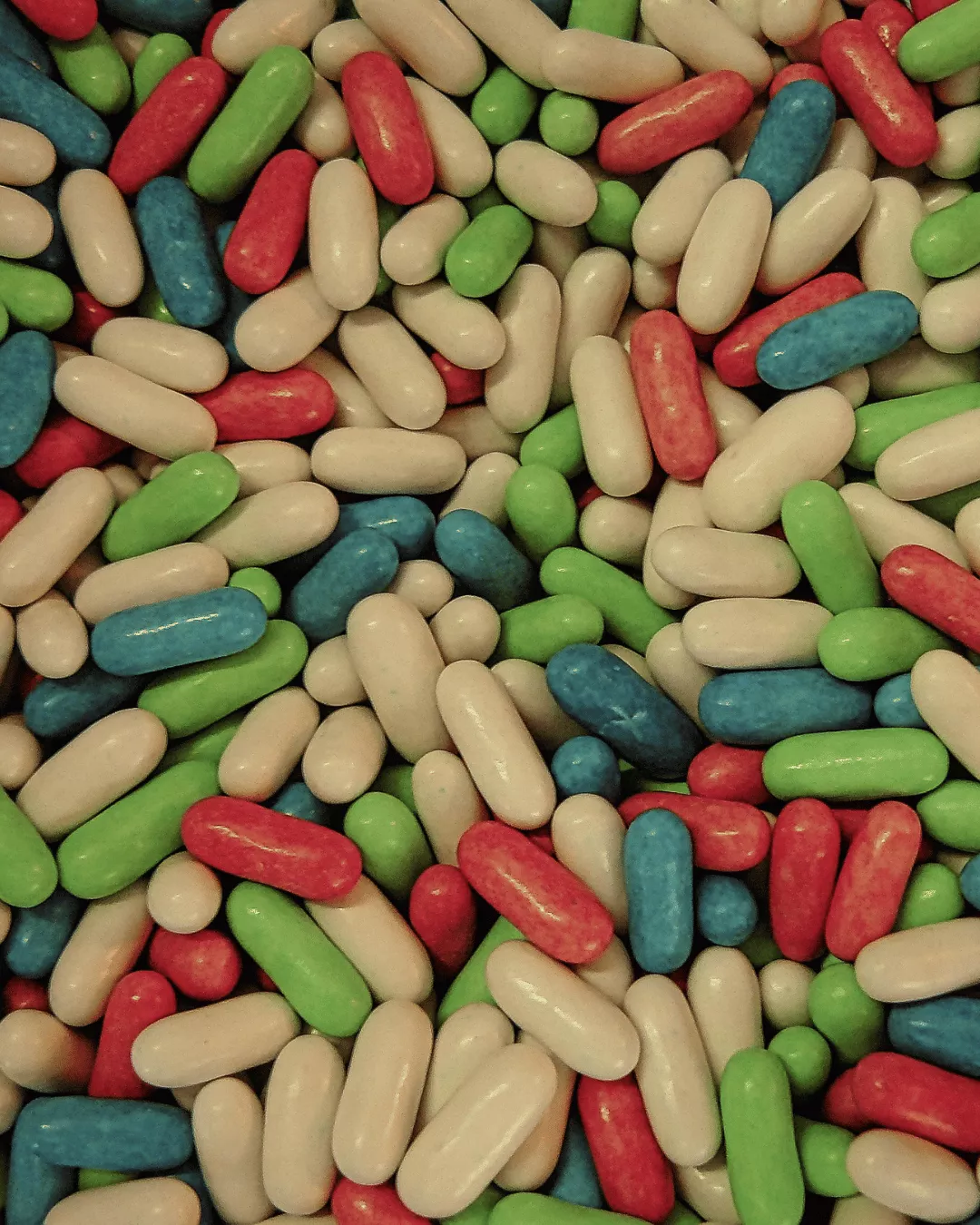
Key Points About Tableting Coatings
Sugar Coating
-
Steps in the process:
-
Sealing
-
Color coating
-
Subcoating
-
Printing
-
-
Produces tablets with a high-gloss and distinct appearance
-
Newer techniques use spray systems and automation to improve efficiency and uniformity
Film Coating
-
Definition: Involves coating the tablet core with a thin film of polymer
-
Advantages:
-
Only 2–3% weight increase
-
Single-stage process
-
Easy to control
-
Maintains original core color
-
Can be automated
-
GMP adaptable
-
-
Equipment used:
-
Accela-Cota
-
Fluidized bed coaters
-
-
Formulation notes:
-
Old formulas are modified to meet current needs
-
Common changes include polymer-to-plasticizer ratio
-
-
Materials used:
-
Film formers: HPMC, MHEC, EC, HPC, organic solutions, solid and aqueous dispersions
-
Plasticizers: PG, low molecular weight PEG, castor oil, spans, glycerins
-
Castor oil and spans → for organic solvents
-
PEG and PE → for aqueous coatings
-
-
Colorants: FD&C or D&C certified; lakes preferred for better results
-
Opaquant-extenders: Silicates, carbonates, titanium dioxide (used to reduce colorant cost and add pastel shades)
-
Others: Solvents, anti-oxidants, surfactants
-
Enteric Coating
-
Purpose:
-
Protects tablet from stomach acid
-
Prevents API degradation in the stomach
-
Reduces stomach irritation
-
Allows intestinal delivery
-
Enables timed release
-
-
Systems:
-
Single-layer or two-layer
-
-
Polymers used:
-
CAP
-
HPMC
-
Acrylates
-
Polyvinyl acetate phthalate
-
Enteric Sugar Coating
-
The sealing coat is adjusted with enteric polymers to pass dissolution tests
-
Subcoating and topcoating follow traditional sugar-coating steps
-
Enteric polymers can form films in film coating
-
Coatings may be mixed with polysaccharides to target the colon
-
Must apply enough coating weight to be effective
Controlled Release Coating
-
Common polymers:
-
Ethyl cellulose
-
Modified acrylates
-
Want to Learn More About Tablet Coating?
LFA Machines is here to help you understand every step of tablet manufacturing, from formulation to final product. If you have questions about coating methods or want guidance on improving your process, get in touch with us. Our team is happy to share what we know.


